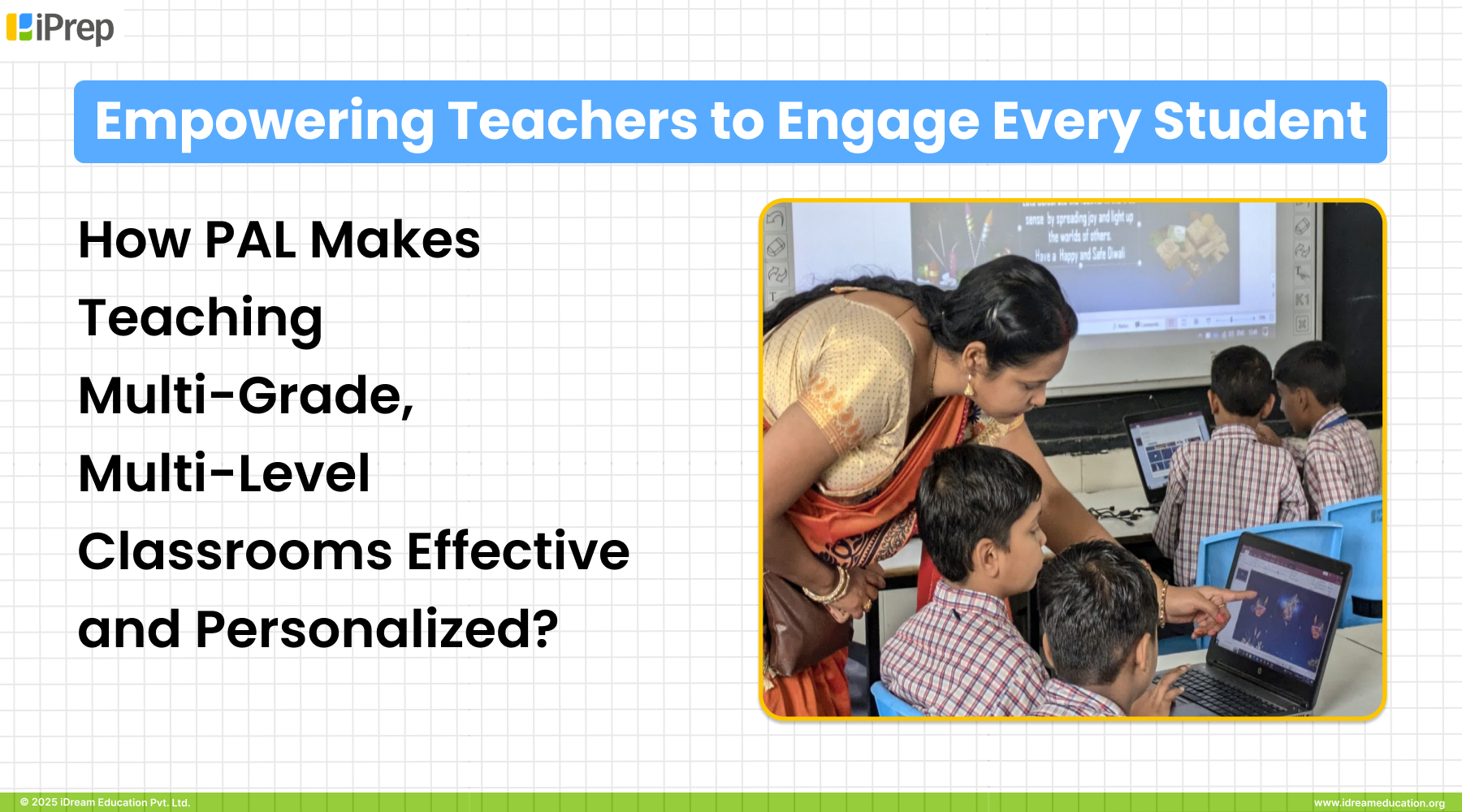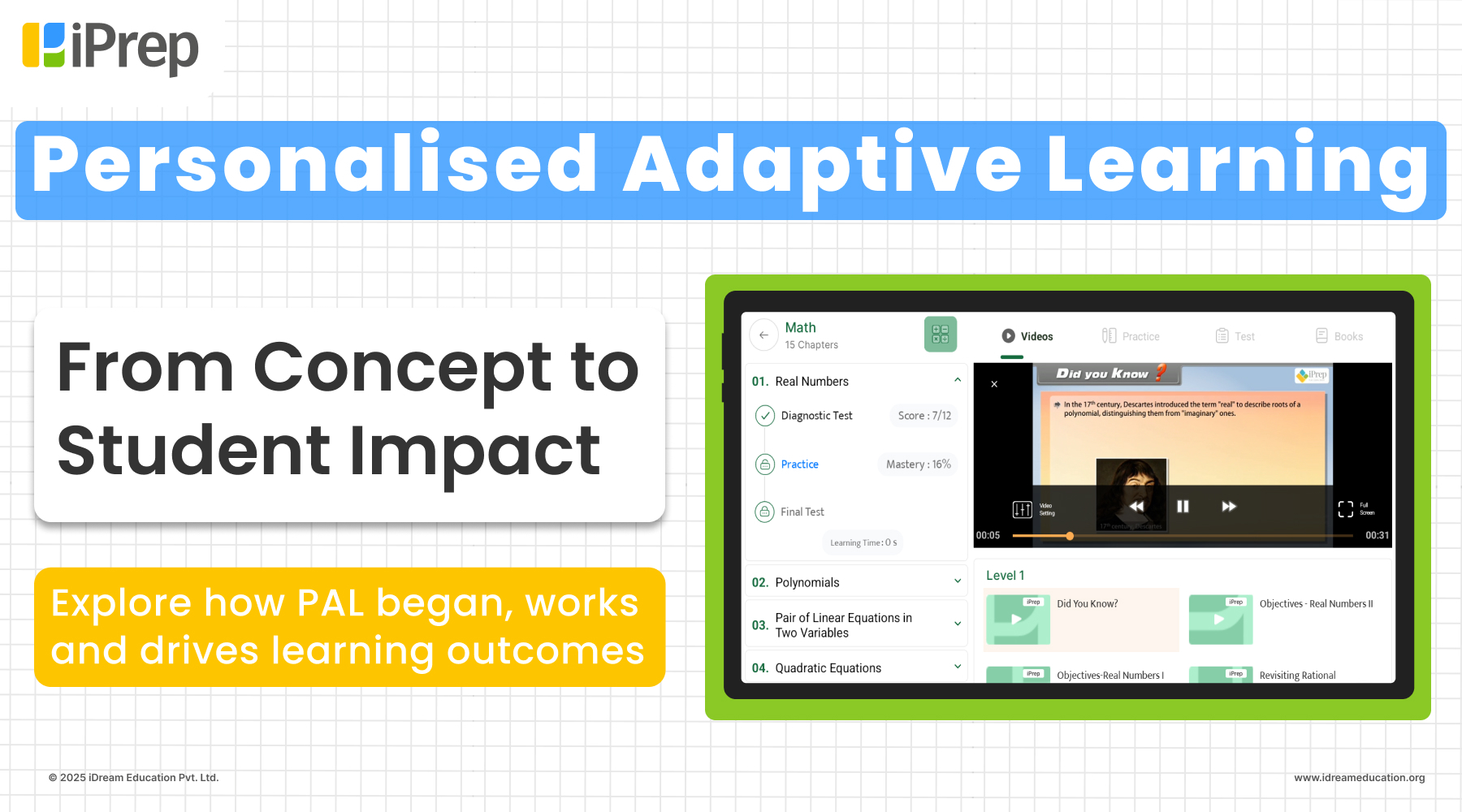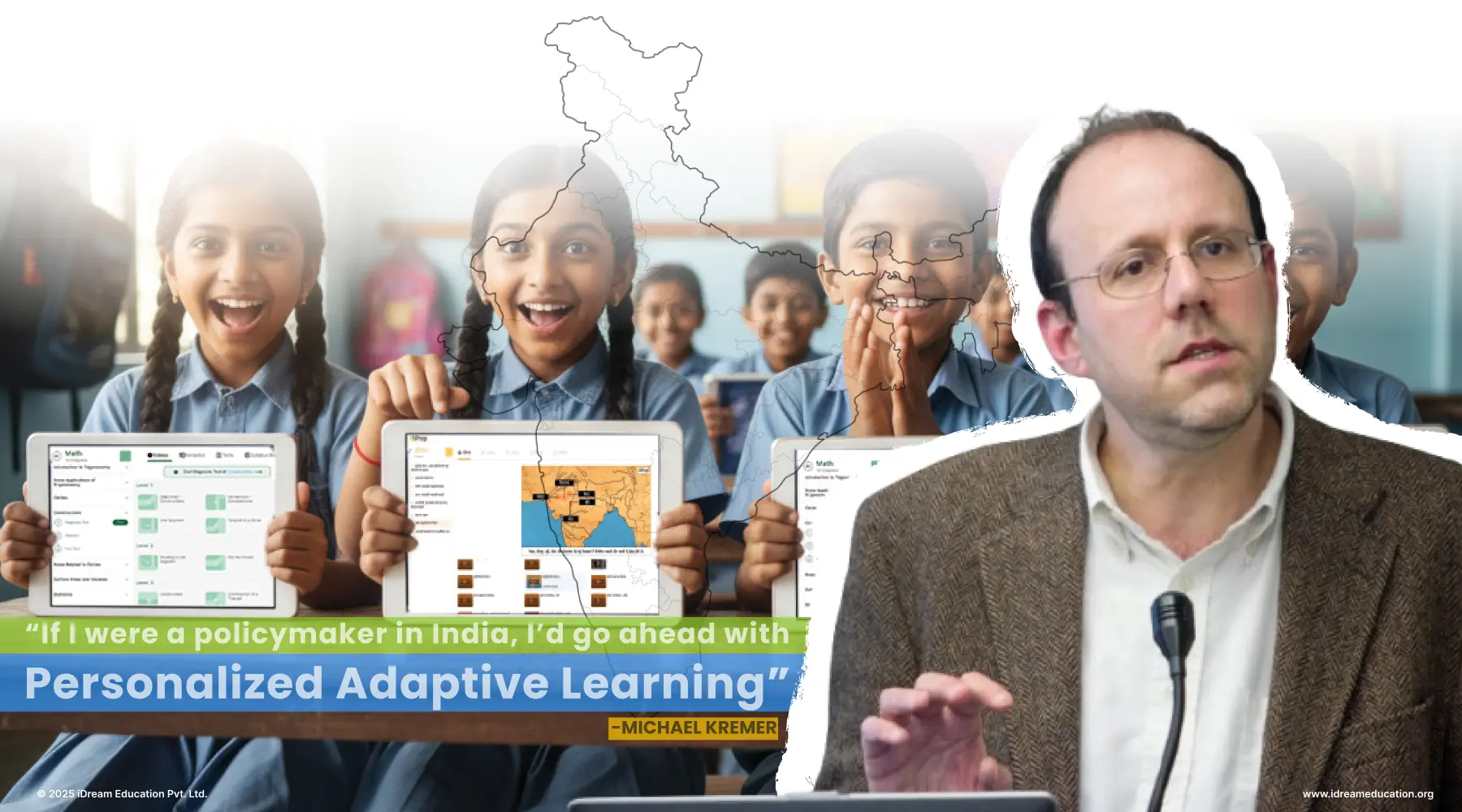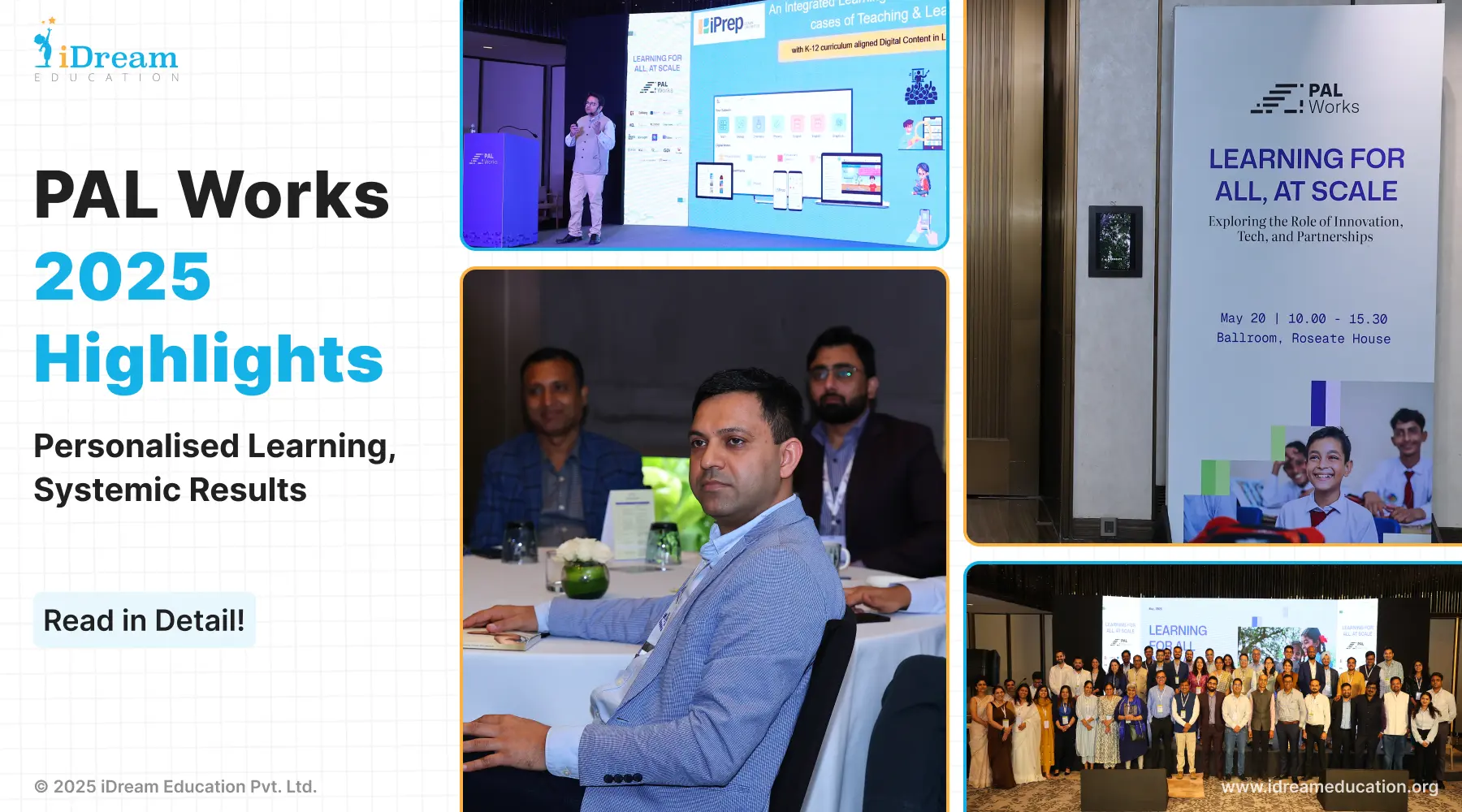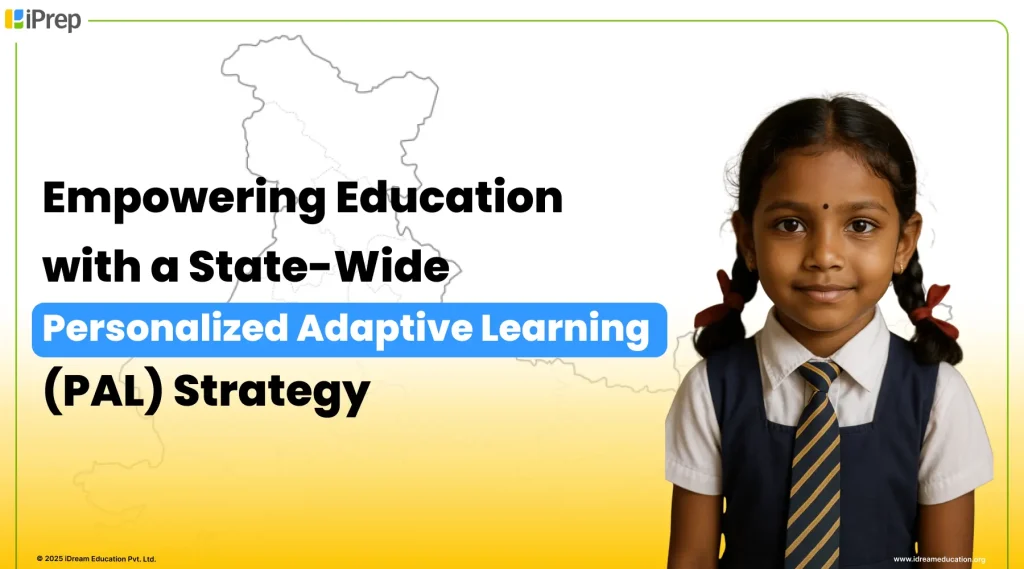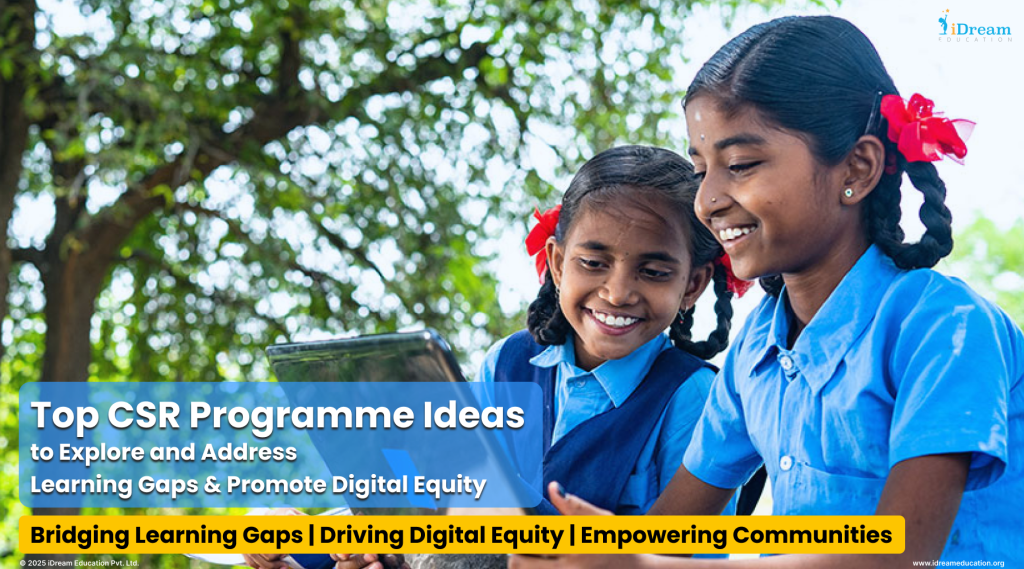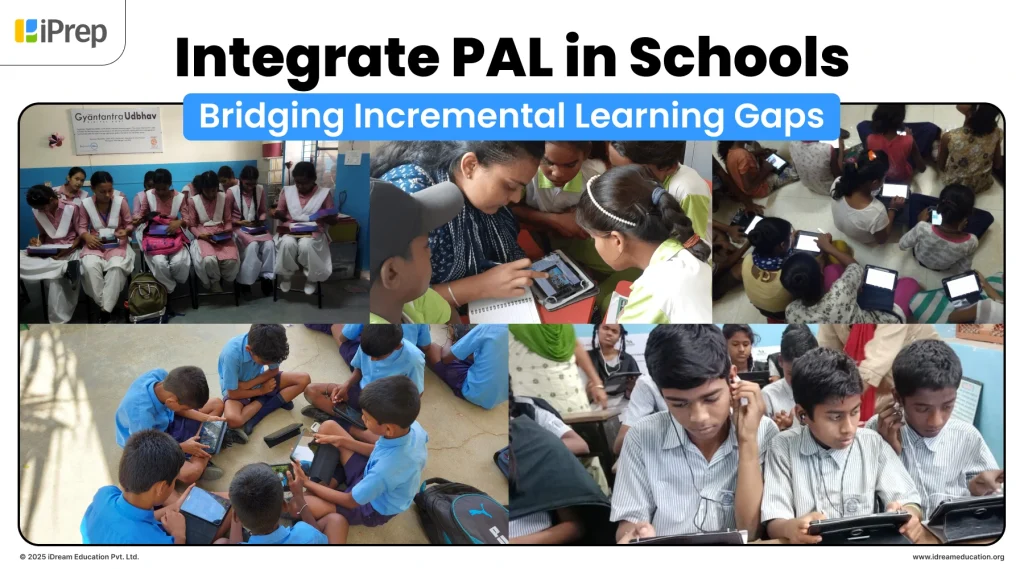
Every learner is different, yet India’s classrooms still follow a one-size-fits-all model where one pace and one style are expected to work for all. While some students grasp concepts quickly, many fall behind. Despite this, our education system often measures success through passing marks – a benchmark of 45% that hides the fact that a student may have understood less than half of the curriculum. As they progress to higher grades without mastering the fundamentals, these learning gaps continue to widen, creating deeper challenges over time.
To truly support every learner, schools need more than periodic tests and grades. They need a continuous and adaptive learning system – one that identifies individual learning needs, tracks progress over time, and provides targeted support at the right moments.
Let’s Look at Some Data Revealing Learning Gaps and the Need for Personalized Adaptive Learning
Across India’s classrooms, we often see a common pattern: students moving ahead each year without mastering the basics. It’s not due to lack of effort but because the system pushes everyone forward at the same pace, even when learning levels differ widely.
Data only reinforces what we already see on the ground. The ASER 2023 survey adds that only 43.3% of 14–18-year-olds can solve a simple 3-digit ÷ 1-digit division problem, and reading proficiency has slightly declined from 76.6% in 2017 to 73.6% in 2023.
This means that more than half of students move into middle school with fragile foundations, making it harder to cope with advanced concepts later on. But the deeper issue is not just learning gaps, but that current school systems lack the means to close them.
Teachers often manage multi-grade, multi-level (MGL) classrooms with limited time and resources. Assessments highlight where students struggle, but rarely show how to help them recover. As a result, even with the best intentions, children are promoted without mastering core concepts.
And while these data points come from national surveys, they still represent only a fraction of learners; thousands more have never been part of any formal study. What they all show, however, is consistent: learning gaps exist, and they grow silently every year unless addressed through personalized support.
This is where Personalized Adaptive Learning (PAL) comes in.
By tailoring instruction to each student’s pace and understanding. PAL helps diagnose and bridge incremental learning gaps by ensuring that no child is left behind. It equips teachers with actionable insights and students with a personalized roadmap for growth, improving overall outcomes.
What does Personalized Adaptive Learning (PAL) really mean? & How can integrating PAL in schools help bridge learning gaps?
Personalized and Adaptive Learning (PAL) is a technology-driven approach that uses real-time data to identify individual learning gaps, guide students to targeted remedial content and practice, and support them in achieving grade-level proficiency. By continuously adapting to each learner’s pace and progress, PAL helps close incremental learning gaps and ensures a more effective, more personalized learning journey for every student.
- For students, PAL helps them with foundational concepts before moving ahead, preventing gaps from compounding over time.
- For teachers, PAL in schools offers actionable insights to support every learner effectively, creating a classroom environment where each student can achieve grade-level proficiency and experience a meaningful learning environment.
Why PAL Works: Insights from Nobel Laureate Michael Kremer
What Nobel Laureate Michael Kremer says about education in India is hard to ignore: “If I were a policymaker in India, I’d go ahead with personalized adaptive learning.” His team at the Development Innovation Lab, University of Chicago, evaluated PAL in 1,224 government schools in Andhra Pradesh, and the findings are inspiring.
The study showed that PAL has the potential to accelerate learning outcomes significantly. The PAL study highlights students who achieved the equivalent of 1.9 years of schooling in just 17 months. Students learned nearly 1.5 times faster using PAL compared to traditional classroom learning. Students at the bottom of the class made the greatest gains, which is most striking. In a system where the weakest learners often fall further behind, PAL’s ability to uplift the lowest performers is truly transformative. Read the study in detail here
Our PAL integration in schools across Haryana and Punjab has also shown and continues to show tangible improvements in student learning outcomes.
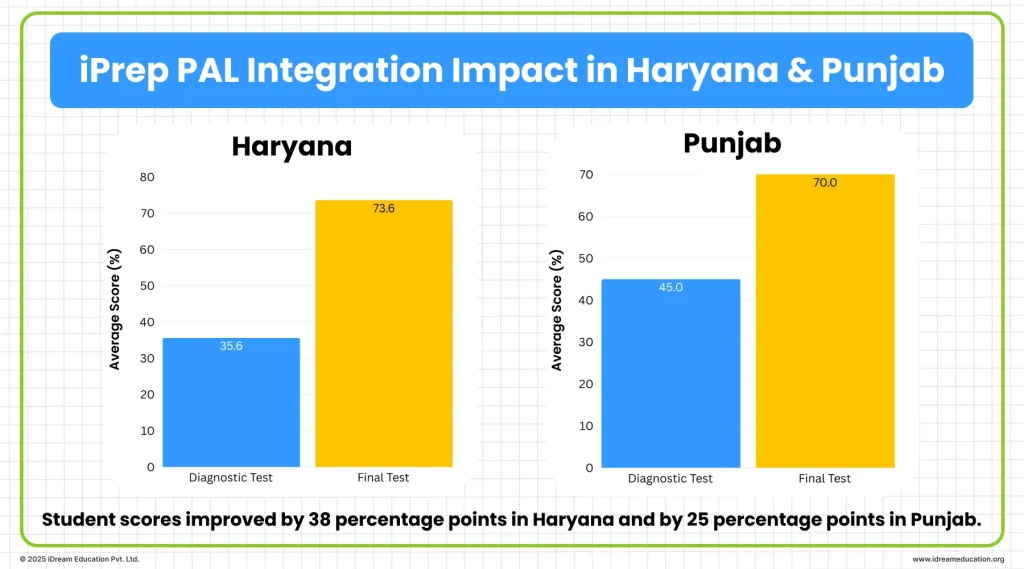
Haryana’s e-Adhigam: Personalized Learning at Scale
In Haryana, iDream Education was chosen as one of the companies to integrate our iPrep PAL into the state’s flagship e-Adhigam program. The focus was on making sure students didn’t just access digital lessons, but actually progressed through a structured adaptive learning journey.
- Scale of E-Adhigam: More than 2.2 lakh students in Classes 11–12 were provided access to PAL through a program that ensures each student has their own dedicated device.
- Approach: One student–one device model.
- What was enabled: Each tablet had curriculum-aligned content, adaptive assessments, and offline-first features to ensure accessibility. Teachers received training to interpret student data and use it for remediation.
- Impact: In subjects like Economics, Business Studies, and Geography, students who attempted both diagnostic and final tests improved. From an average diagnostic score of 35.6% to a final average score of 73.6%. This reflects a 38 percentage points increase (absolute), which also represents a 106.7% relative improvement over the baseline (i.e., the final score was more than double the diagnostic score in the first learning cycle).
PAL LAB in Schools of Punjab: Consistency in Every Classroom
In Punjab, our PAL integration model was different. Instead of individual tablets, we set up a PAL LAB. This ensures that students across the school can use PAL on a rotational basis, addressing their incremental learning gaps.
Instead of personal devices, 20 schools received 20 storage and charging racks equipped with pre-installed tablets. With the iPrep PAL App on each device, preloaded with curriculum-aligned content for Classes 1–12 in English and Punjabi.
- Approach: Shared access to devices through rotational use of PAL Labs.
- What was enabled: Each tablet came preloaded with offline PAL LMS, offering digital content for Classes 1–8 in English and Punjabi. This ensured inclusivity and local relevance. The schools customized the libraries to meet their specific needs.
- Impact: Around 5,000 students actively engaged with PAL over 12 months. Data showed improvement in Math and Science scores. From an average diagnostic score of 45% to a final average score of 70%, representing a 25 percentage point increase (absolute). It equates to a 55.6% relative improvement over the initial score, driven by repeated practice, remedial video lessons, and adaptive pathways.
This model demonstrated how PAL can work effectively even where personal devices are not feasible, by ensuring equitable access through shared infrastructure.
What It Takes to Integrate PAL in Schools as a Full-Fledged, Outcome-Driven Solution

If PAL has to drive real outcomes in schools, it cannot just be another app installed and forgotten. The design and implementation must be in a way that makes the journey simple, structured, and outcome-focused for every child. Here’s what that really means:
Universally Designed Adaptive Solution
A truly outcome-driven PAL system should feel effortless for students to use. They shouldn’t have to figure out where to go, which content to choose, or how to practice repeatedly. Instead, the platform itself should guide their learning journey, making it continuous and natural.
- This means the PAL you implement must follow universally designed principles, allowing any child to start learning without prior training. In this way, learning becomes seamless, and incremental gaps are systematically addressed as part of the PAL journey.
Curriculum-Aligned Remedial Learning Content
When the digital lessons, practice modules, and remedial exercises are mapped exactly to the school curriculum, students don’t see PAL as an “extra app”. It becomes a natural extension of their classroom learning.
- A well-designed PAL system seamlessly integrates remedial lessons with the current syllabus, enabling students to progress confidently at their grade level while quietly strengthening their foundational skills.
- With such a PAL solution, students practice and master concepts in alignment with what they learn at school, reinforcing familiarity and confidence. This seamless integration ensures that teachers can easily blend PAL activities with regular lessons. It helps every learner move steadily toward mastery without losing the rhythm of classroom education.
Offline Learning Journey
The PAL solution must be designed to work fully offline to be implemented and used in low-bandwidth areas.
- An offline PAL system ensures that a personalized adaptive learning solution can be implemented in any school. But empowering last-mile learners in low-bandwidth areas to access education and address their historical learning gaps.
- An offline PAL solution and its content ensure a safe and distraction-free learning environment
PAL Lab / Digital Library / Personalized Devices
A robust PAL solution offers the flexibility to implement personalized adaptive learning based on specific requirements, budget, and scale. With the right PAL vendor, it can be deployed through a PAL Lab, a digital library, or individual devices. It allows every institution to adopt it according to their available infrastructure and resources.
| Implementation Setup | PAL Lab (Shared Access Model) | Personalized Devices (1:1 Model) |
| How It Works | A dedicated room or corner equipped with tablets or Chromebooks preloaded with PAL apps, used by students in scheduled rotations. | Each student receives a personal device with PAL installed, allowing both in-school and at-home learning. |
| Ideal Context | Works best for government or affordable private schools with limited budgets or infrastructure. | Ideal for CSR or state-led programs (like Haryana’s e-Adhigam) offering one-device-per-student access. |
| What It Enables | Provides shared offline access to adaptive and bilingual learning content during school hours. | Enables personalized, bilingual, and continuous learning, anytime, anywhere. |
| Key Advantage | Cost-effective and scalable; ensures equitable access and teacher-guided group learning. | Delivers deep personalization, real-time progress tracking, and extended learning continuity. |
This flexibility suggests that full-fledged PAL can be fully implemented in multiple ways and is cost-effective, scalable, and allows for wide-reaching access
Student and Teacher Training
Experiential Teacher and students training is a critical component for implementing PAL as a full-fledged, outcome-driven solution.
- For students, experiential training is needed to help them understand how their learning journey begins. How they progress, and how to use the platform to close learning gaps step by step.
- For teachers, training ensures they can effectively read PAL dashboards, track each student’s learning gaps and levels. It tailors their teaching approach accordingly, even the best technology fails if users don’t know how to use it effectively, which is why ongoing, simple, and practical training for both students and teachers is essential.
- Along with initial training for students and teachers, the program should include monthly check-ins, data reviews, and regular sharing of short training videos with teachers on WhatsApp for quick reference. Additionally, quarterly training sessions should be conducted based on school-wise performance data.
Usage Reporting and Monitoring
A strong usage reporting system is central to making PAL implementation measurable and scalable. In many government and CSR-funded programmes, connectivity remains inconsistent. Through this, administrators can capture key metrics such as:
- Active user count: number of students and teachers actively engaging with PAL.
- Learning progress: topics completed, assessment scores, and mastery levels.
- Usage frequency and duration: how often and how long users access the app.
- Offline-to-online sync logs: tracking when and where data uploads occur for project audits.
This offline-first, data-driven reporting approach helps project teams ensure accountability while also allowing flexibility in low-connectivity areas. Rather than only measuring logins or device distribution, PAL learning system builds an evidence base for engagement, teacher adoption, and real-world outcomes, the factors that truly define success in large-scale education initiatives.
On-Call Guidance and Support
Continuous guidance and support are crucial to ensure consistent PAL usage and ongoing improvement in learning outcomes.
- For students, on-call support helps resolve technical issues, navigate challenges in their learning journey, and stay motivated.
- For teachers, it assists in interpreting reports, understanding student progress, and planning targeted interventions.
- Even small hurdles, such as login issues or difficulty reading dashboards, can slow PAL adoption in real classrooms. By offering immediate support, the PAL solution ensures momentum is maintained, usage remains uninterrupted. Both teachers and students stay confident in the platform. This consistency helps PAL become an integral part of daily learning, fostering trust and securing long-term results.
Integration of a Full-Fledged Personalized Adaptive Learning Solution
When implemented with the right programmatic interventions, a PAL can be easily adopted and used meaningfully, helping students reach grade-level learning. Learn without fear of judgment or comparison, and thrive in a supportive environment where every learner can progress confidently.
If you are planning to integrate PAL software or implement a complete PAL program in schools and would like to learn more or explore use cases. You can contact us at +917678265039 or write to share@idreameducation.org. You can also share your details here.


